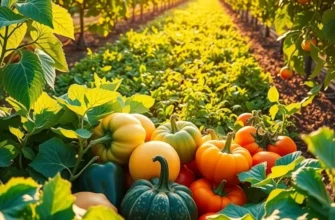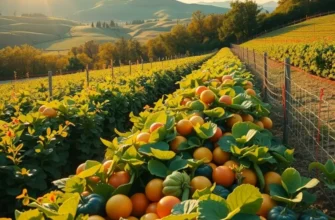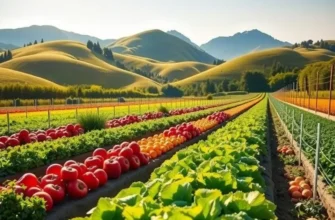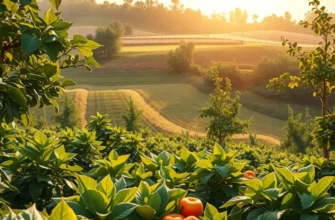Choosing sustainable groceries not only benefits your health but also positively impacts our environment. With careful selection and conscious decisions, every grocery run can be an opportunity to support eco-friendly practices. From understanding packaging to sourcing local produce, there are various ways to shop wisely. By embracing these sustainable grocery shopping tips, you can contribute to reducing waste, supporting local economies, and encouraging environmentally responsible farming practices. Let’s explore practical steps to make your shopping trips more sustainable.
The Power of Local: Sourcing Responsibly

Choosing local produce is one of the most impactful ways to shop sustainably. By sourcing products from local farmers’ markets or co-ops, you not only reduce your carbon footprint but also support the very heart of your community.
Local produce travels fewer miles to reach your plate. This reduction in food miles translates to lower greenhouse gas emissions, which are a major contributor to climate change. Buying local means fewer emissions from transportation, as the food doesn’t require long-distance shipping.
When you invest in local produce, you’re choosing freshness. Local produce is harvested at peak ripeness, often only hours before it reaches market stands. This means fruits and veggies are crisper and more nutritious. With minimal storage time, foods retain their flavors better, offering unparalleled taste and health benefits.
Community ties are deeply strengthened by local shopping. Direct transactions with farmers foster relationships built on trust and transparency. You can ask questions about farming practices, land stewardship, and organic certifications. These interactions provide peace of mind, knowing precisely how your food is grown.
Supporting local farms also encourages biodiversity. Many local farmers grow a range of crops, reducing the risk of pests and diseases that plague monocultures. By choosing a variety of local produce, you support farmers in maintaining diverse crops that sustain ecological balance.
Economically, buying local bolsters the local economy. Every dollar spent at a local farm is reinvested within the community, supporting schools, public services, and other local businesses. In essence, you help keep your community vibrant and self-reliant.
For practical tips on meal preparation with local produce, explore minimal prep dinner ideas. The link offers inventive solutions that leverage fresh, local ingredients with simplicity and delight.
Farmers’ markets and co-ops offer seasonality insights. Seasonal eating reduces reliance on artificial ripening agents and storage facilities, further lessening environmental impact. Aligning meal plans with seasonal availability prompts a natural flow of diverse and plentiful options.
While it might require extra scheduling to visit a farmers’ market, this change is often met with sociocultural rewards. Markets host local artisans and other vendors, creating a unique tapestry of local culture. Such experiences foster a deeper appreciation for the community’s agrarian landscape.
In conclusion, choosing local not only brings advantages to our plates but also to our planet and our people. It’s an investment in the future, ensuring sustainability and resiliency for generations to come.
Packaging Matters: Making Informed Choices

Choosing products with mindful packaging is vital in fostering sustainable habits. Packaging significantly affects the environment, contributing to waste and pollution. By selecting alternatives such as reusable bags and bulk purchasing, we can actively reduce our environmental footprint.
Plastic is prevalent because it’s cheap, light, and durable, but it’s also detrimental to ecosystems. It doesn’t biodegrade, leading to pervasive litter in oceans and landscapes. Reducing plastic usage is crucial, and one effective method is to use reusable bags. These can replace single-use grocery bags, cutting down plastic waste substantially.
Bulk purchasing is another strategy that minimizes packaging. Buying in bulk usually involves fewer materials than individual products. It can also save money and reduce the need for frequent shopping trips. Many stores offer bulk bins where you can bring your own containers, eliminating the need for single-use plastic packaging.
The zero-waste concept promotes reducing waste generation to near zero. This lifestyle encourages individuals to make conscious choices about what they buy and how it’s packaged. Opt for products with minimal packaging or those that use recycled or biodegradable materials. Brands that use such packaging often reflect a commitment to sustainability.
Using glass instead of plastic for food storage can also help. Glass is recyclable, and it doesn’t leach chemicals into food. While heavier, glass containers are reusable and promote a healthier lifestyle.
When considering canned goods, look for those without BPA-lined cans, similar to choosing glass over plastic. Bisphenol A (BPA) is a chemical used in can linings, which can seep into food and pose health risks.
Composting is another component of sustainable packaging. Some products come in compostable packaging, which can be broken down into organic matter. This reduces the waste sent to landfills and enriches the soil.
Integrating these practices requires modification of shopping habits, but they’re manageable steps toward reducing environmental harm. Consider these strategies alongside other eco-friendly kitchen and storage solutions, such as those covered in the eco-smart kitchen storage guide.
Ultimately, making informed choices about packaging at grocery stores is a powerful way to support ecological well-being while enhancing personal health.
Final words
Sustainable grocery shopping is not just a trend but a significant lifestyle choice that reflects a commitment to environmental stewardship. By prioritizing local products and mindful packaging, you play a vital role in nurturing our planet. These simple yet impactful choices contribute to reducing carbon footprints and fostering a healthier ecosystem. Remember, making sustainable decisions doesn’t have to be overwhelming; start small, and gradually incorporate more eco-friendly practices into your shopping routine. Each choice you make helps create a healthier world, paving the way for a sustainable future for generations to come.








